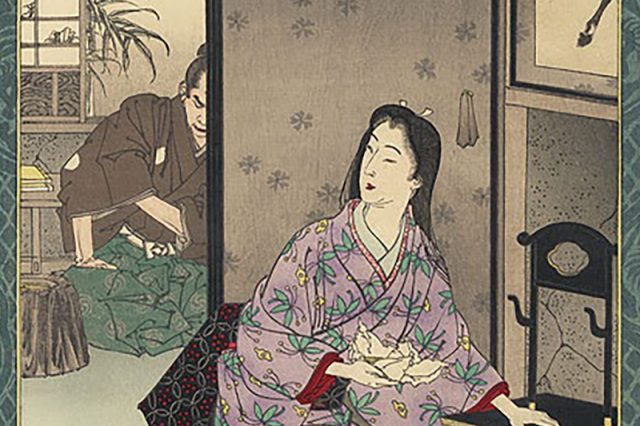
Sometimes the impetus for reflection comes from the most unlikely places. A few years ago, I bought a woodblock print by Toshikata titled “Yamanouchi Kazutoyo’s Wife.” It tells the story of Chiyo, a young samurai’s wife, who uses money she has saved to buy him the best horse she could find, a symbol of status and stature that would fuel his rise to power in the Sengoku period. When I saw the print, it reminded me in a very personal way a profound act of kindness that someone had done for me and I knew I had to own the print. Upon seeing it, I was moved and learning the story I was brought back to that memory in a very visceral way.
Recently, I have been thinking a lot about what is missing in the rope community as I see it. There is and always has been plenty to critique in the rope world and in the world of BDSM more generally. But what I see lacking the most is kindness.
That may seem an odd thing to look for in the midst of people tying each other up and often doing things that we call torture or torment. But in the immortal words of Nick Lowe, sometimes you need to be cruel to be kind.
As I see it, kindness is nothing more than the quality of seeing another in a profound and real way and taking an action that is neither necessary nor requested, in order to recognize them. It may be as small as a kind word or as dramatic as buying them a horse (OK, admittedly an outdated gesture). But the essence of kindness is taking the time to see who a person is and what a person needs, perhaps even when they can’t see it themselves, and giving them something special and deliberate in a way which enriches both people’s lives. That has always been the goal I strive for when I tie.
The root of kindness is never ego. Nor is it transactional. It is not about what you can get from another. It is about what you can give, without expectation or requirement of reciprocity. It is a giving, rather than a taking.
But kindness is not sacrifice. It is not something given at one’s expense, but rather it is fulfilling because it is what we can be when we are at our most human. It makes us vulnerable to be kind. Perhaps that is why it happens less often than it should. It is actually quite hard to understand why an act which enriches those who both give it and who receive it happens with such relative infrequency. In a world (and a community) where harsh criticism, argument, envy, greed, jealousy, and competition are so prevalent, why is kindness so scarce?
Perhaps, because we, as a culture, are quick to mistake kindness for weakness or a lack of dominance. We fear being taken advantage of or seen as foolish. Nothing could be farther from the truth. Kindness takes strength. It takes wisdom. It takes insight. Occasionally it even may mean treating people better than they deserve.
So what does it mean to be kind with our rope? I believe it means taking the time to understand our partner, our connection, and our selves. It means that rope can and should be an act of giving, rather than taking. It also means seeing the best in what others do, assuming they mean well. Perhaps if we treated others with kindness rather than scorn, they might rise to the occasion and meet our expectations of them.
The language of consent has become dominated by the discourse of transaction, about what we are permitted to take, the limits on our behavior. We even call them “negotiations” which presumes the two sides want different things and we can reach some agreement on how each side can make the best deal to reflect their interests.
While I am not suggesting we no longer negotiate, what I do suggest is that perhaps there is a way of thinking about a rope scene less as a question of “what do I want?” and more of a question of “who is my partner and what do they need?” Then tending to those needs with a logic of kindness. In think in doing so, we are much less likely to violate boundaries or consent.
There is, in the end, no downside to adding acts of kindness, both small and large, to our scenes and to our community.
As Aesop wrote, “The level of our success is limited only by our imagination and no act of kindness, however small, is ever wasted.”







